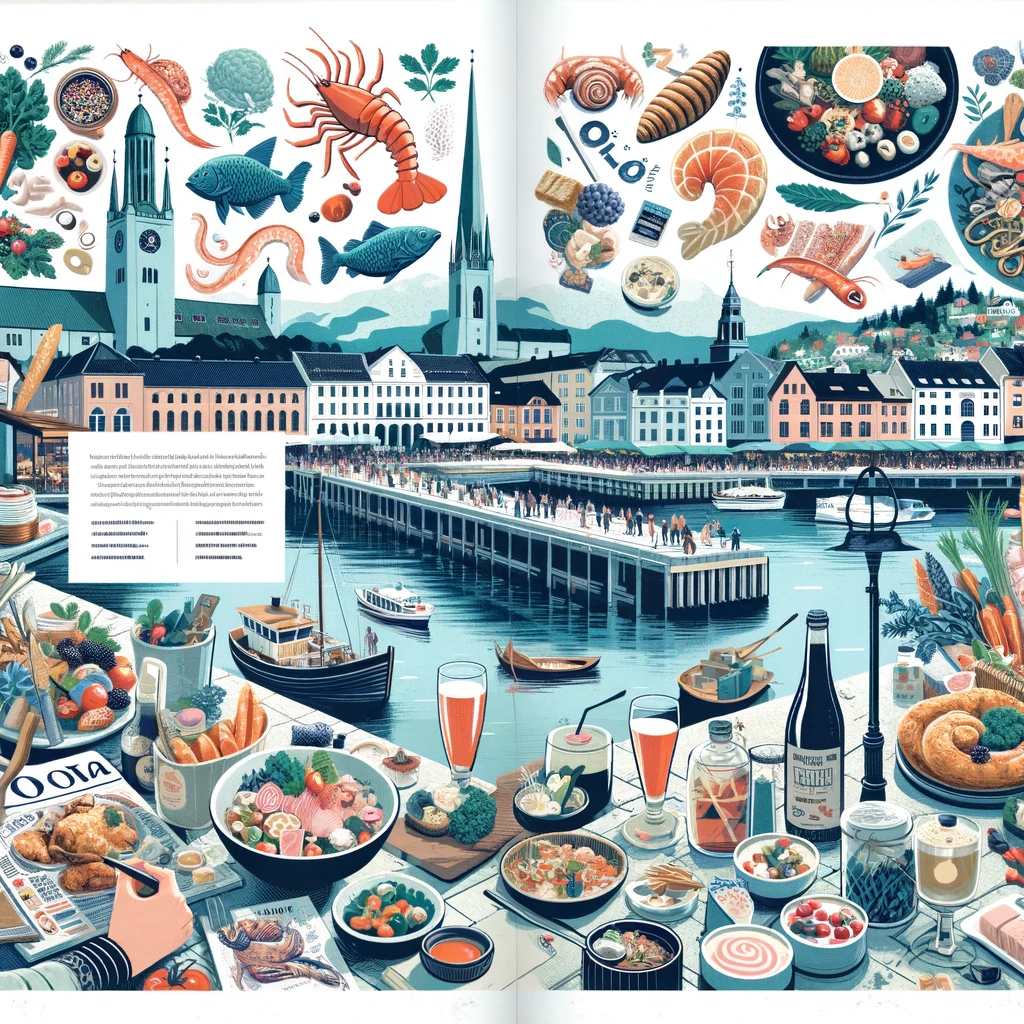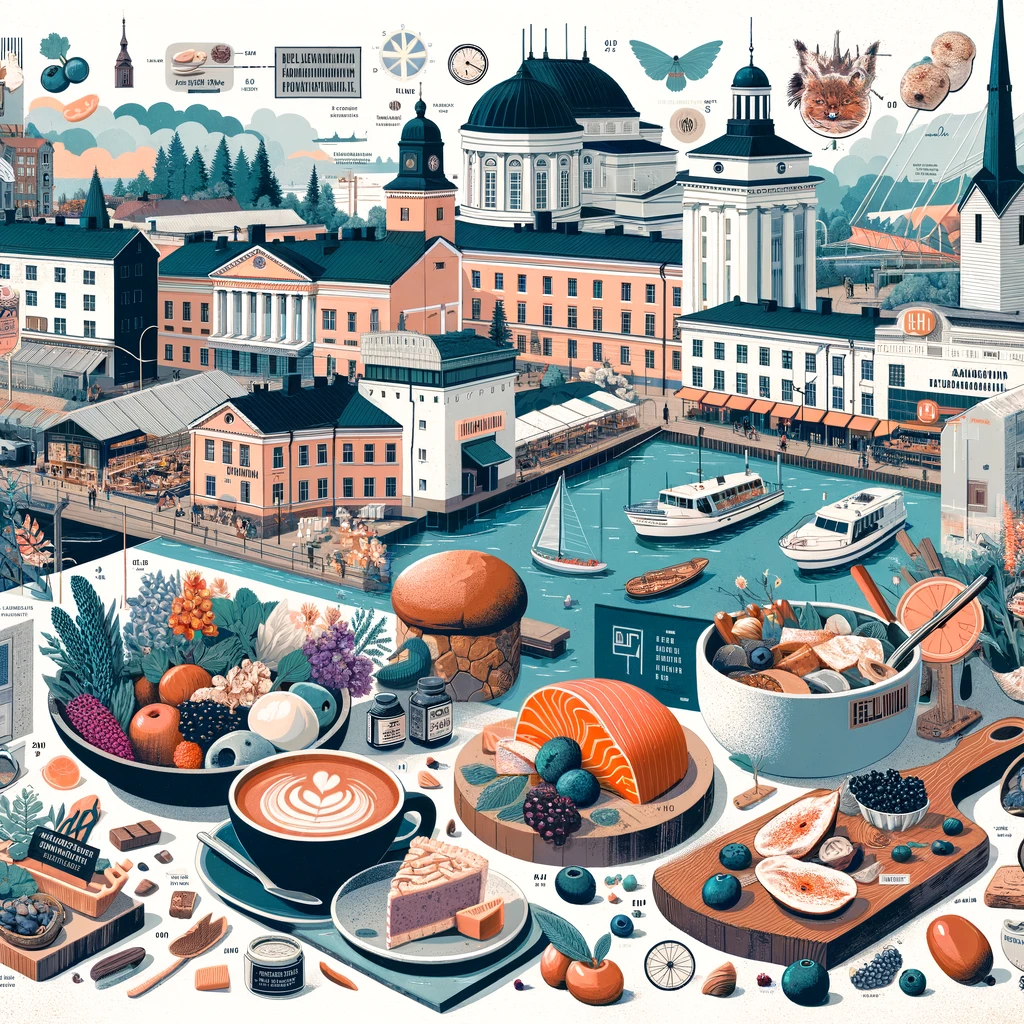Top Things to Eat in Oslo: Norwegian Delicacies and Must-Try Dishes

1. Smoked Salmon
-
A beloved Norwegian food, smoked salmon is renowned for its rich and smoky taste.
-
Typically served on open-faced sandwiches known as “smørbrød,” this dish offers a delightful blend of flavors.
-
In Oslo, numerous eateries and markets showcase this delectable fish, allowing visitors to indulge in its unique and savory profile.
2. Kjøttkaker
Kjøttkaker are traditional Norwegian meatballs that perfectly blend ground beef and pork, creating a rich and flavorful dish. This classic comfort food is a staple in Oslo’s culinary scene, offering a taste of the city’s heritage.
Served alongside creamy mashed potatoes, gravy, and lingonberry sauce, Kjøttkaker provides a satisfying meal that balances savory and sweet flavors. The combination of tender meatballs with the creamy texture of the potatoes creates a delightful dining experience.
The lingonberry sauce adds a touch of tartness to complement the richness of the meatballs, enhancing the overall flavor profile. This dish embodies Norwegian cuisine at its finest, showcasing simple yet delicious ingredients prepared with care.
For those looking to immerse themselves in Oslo’s food culture, trying Kjøttkaker is an absolute must. Whether enjoyed at a local restaurant or prepared at home using authentic recipes, this dish offers a true taste of Norway’s culinary traditions.
3. Brunost
Brunost, also known as brown cheese, is a distinctive Norwegian delicacy renowned for its caramel-like taste. Crafted from whey and cow’s milk, this cheese offers a unique blend of sweetness with a hint of tanginess that sets it apart on the palate.
Enjoyed traditionally on bread or waffles, brunost has become an integral part of Norwegian cuisine and culture. Its rich flavor profile makes it a versatile ingredient suitable for both sweet and savory dishes. Whether spread over warm toast or incorporated into sauces for meats, brunost adds depth to culinary creations.
In Oslo particularly, you can find variations of brunost in local markets and eateries, showcasing the cheese’s popularity among residents and visitors alike. The cheese’s texture varies from creamy to firm depending on the type and aging process, offering diverse options for consumption preferences.
Brunost serves as a prime example of how regional ingredients can shape culinary identities while providing a delightful gastronomic experience for those eager to explore Norway’s food scene further.
4. Rakfisk
Rakfisk is a traditional Norwegian dish that features fermented fish, typically trout or char. This unique delicacy is renowned for its strong flavor and distinct pungent aroma, making it a memorable culinary experience.
Served alongside flatbread or potatoes, rakfisk offers a taste sensation like no other. While it might not appeal to everyone’s palate initially due to its acquired taste, trying this dish in Oslo provides insight into Norway’s rich gastronomic heritage.
The range of flavors and textures in rakfisk showcases the depth of Norwegian cuisine and the importance of preserving traditional cooking methods. For those seeking an authentic culinary adventure in Oslo, sampling rakfisk is a must-do activity.
5. Lefse
Lefse is a traditional Norwegian flatbread that combines potatoes, flour, and cream to create a thin and soft texture. This delicacy is commonly enjoyed in Oslo for its versatility as both a snack and dessert.
Often served rolled up with a delectable mix of butter, sugar, and cinnamon, lefse offers a sweet treat that satisfies cravings any time of day. It can be found in numerous bakeries across Oslo, making it easily accessible for locals and tourists alike.
Whether you’re exploring the city or looking for a quick bite on the go, lefse provides a taste of authentic Norwegian cuisine with its unique blend of flavors. Be sure to indulge in this delightful pastry during your culinary adventures in Oslo!
6. Fårikål
Fårikål is Norway’s national dish, a savory lamb stew cooked with cabbage and whole black peppercorns. This traditional meal is typically prepared in early autumn when fresh ingredients like lamb and cabbage are at their peak.
The slow cooking process allows the flavors to meld together, creating a rich and hearty dish that embodies the essence of Oslo’s rustic cuisine. Fårikål represents the simplicity and wholesomeness of Norwegian food culture, showcasing how local ingredients can be transformed into a delicious culinary experience.
7. Sursild
Pickled herring in a blend of vinegar, sugar, onions, and spices creates the delightful dish known as Sursild. This traditional Norwegian appetizer often graces the tables as part of a “smorgasbord,” offering a burst of tangy flavors to Oslo’s culinary landscape.
Served cold, Sursild brings a unique touch to meals with its zesty and slightly acidic profile. The combination of sweet from the sugar and sharpness from the vinegar elevates this dish into a must-try for those exploring Oslo’s food scene.
The marriage of ingredients in Sursild exemplifies Norway’s culinary heritage while also showcasing how simplicity can result in complex flavors that delight both locals and visitors alike. Whether enjoyed on its own or paired with other dishes, Sursild stands out as an iconic taste experience within Oslo’s gastronomic offerings.
8. Klippfisk
Dried and salted cod, known as klippfisk, is a significant part of Norwegian cuisine. This traditional ingredient is essential in many dishes in Oslo due to the city’s historical ties to the sea.
Klippfisk is prepared by rehydrating the fish before cooking it, ensuring a unique texture and flavor profile. The soaking process helps soften the fish while retaining its distinct taste.
Oslo’s culinary scene often features klippfisk prominently, especially in dishes like bacalao—a flavorful stew that highlights the versatility of this preserved seafood. By incorporating klippfisk into their meals, locals and visitors alike can experience authentic Norwegian flavors deeply rooted in Oslo’s maritime heritage.
9. Reindeer Stew
A hearty stew made with tender reindeer meat, root vegetables, and aromatic herbs. This traditional dish reflects the Sami culture and traditions of northern Norway. The rich flavors and textures in this stew offer a unique culinary experience that captures Oslo’s indigenous essence.
Reindeer stew is not just a meal; it’s a cultural journey on a plate. By savoring this dish, you are immersing yourself in the heritage of the region. The use of reindeer meat showcases how locals have adapted to their environment over generations.
The blend of earthy root vegetables like carrots and potatoes combined with fragrant herbs creates a harmonious flavor profile that is both comforting and satisfying. Each spoonful tells a story of resilience, tradition, and respect for nature.
For those seeking an authentic taste of Oslo beyond the ordinary fare, indulging in reindeer stew is a must-do culinary adventure. It’s not just about food; it’s about connecting with the history and spirit of Norway’s capital through its time-honored recipes.
10. Waffles with Brown Cheese and Jam
Norwegian waffles are typically served with slices of brown cheese, known as brunost, and a dollop of jam. This unique combination offers a blend of sweet, savory, and tangy flavors that create a delightful contrast for your taste buds.
Enjoyed as either a snack or dessert, this treat holds significant cultural importance in Oslo’s culinary scene. The locals cherish these waffles not only for their delicious taste but also for the tradition and history they represent in Norwegian cuisine.
The marriage of warm waffles topped with rich brown cheese and fruity jam is an experience you shouldn’t miss while exploring Oslo’s food offerings. It’s a perfect example of how diverse ingredients can come together to form a harmonious dish that reflects the essence of local gastronomy.
Indulging in this classic Norwegian delicacy is like taking a flavorful journey through the heart of Oslo’s culinary heritage – each bite tells a story that dates back generations.
Frequently Asked Questions
What is Brunost?
Brunost, also known as brown cheese, is a Norwegian cheese with a caramelized taste. It’s made from whey and has a unique sweet flavor that pairs well with bread or waffles.
Is Reindeer Stew a common dish in Oslo?
Yes, Reindeer Stew is considered a traditional delicacy in Oslo and other parts of Norway. It’s often enjoyed during the colder months and offers a rich, gamey flavor that reflects the region’s culinary heritage.
How are Kjøttkaker prepared?
Kjøttkaker are Norwegian meatballs made from ground meat mixed with onions, breadcrumbs, and spices. They are typically pan-fried until golden brown and served with gravy, potatoes, lingonberry sauce for a hearty meal.
What makes Lefse special among Norwegian dishes?
Lefse is a traditional soft flatbread made from potatoes, flour, butter, and milk. It can be enjoyed sweet or savory filled with ingredients like cinnamon-sugar or smoked salmon. Its thin texture sets it apart as an iconic Norwegian treat.
Can you describe the taste of Rakfisk?
Rakfisk is fermented trout that has been cured for several months to develop its distinct pungent aroma and tangy flavor profile. It’s an acquired taste similar to strong cheeses but beloved by those who appreciate its unique character.



